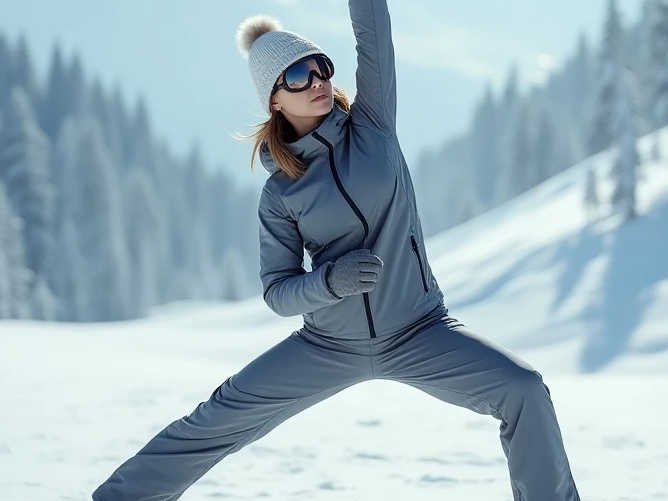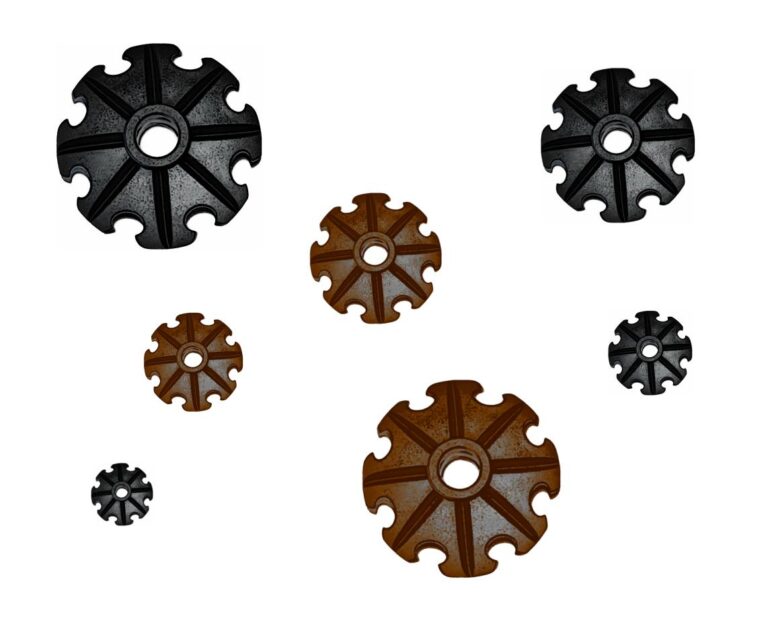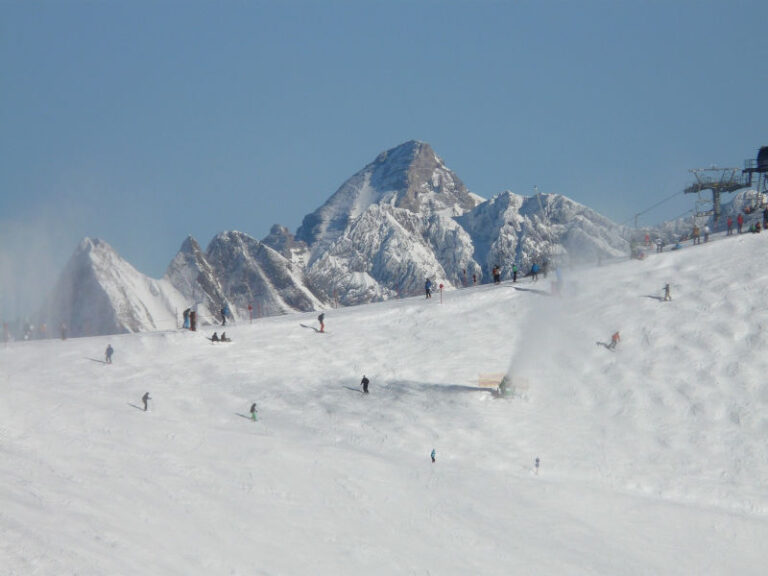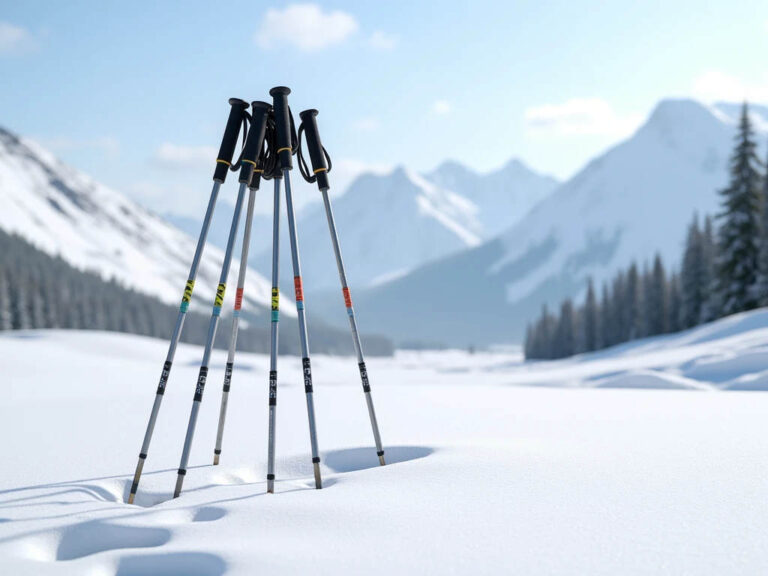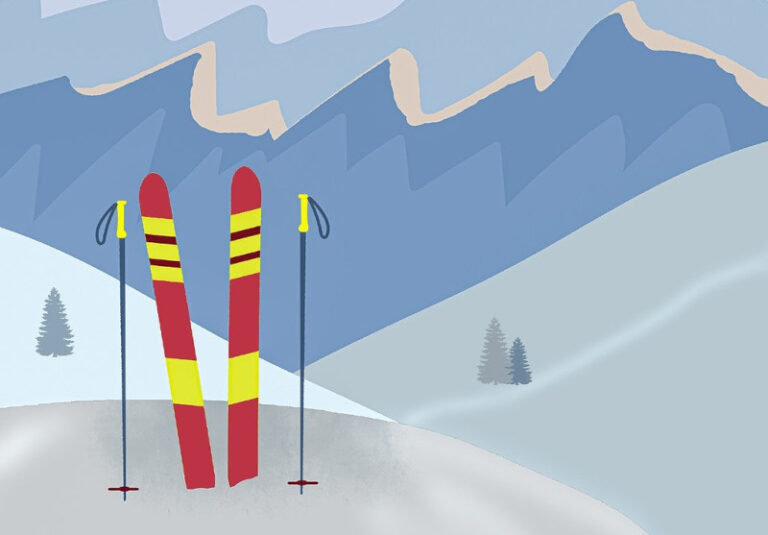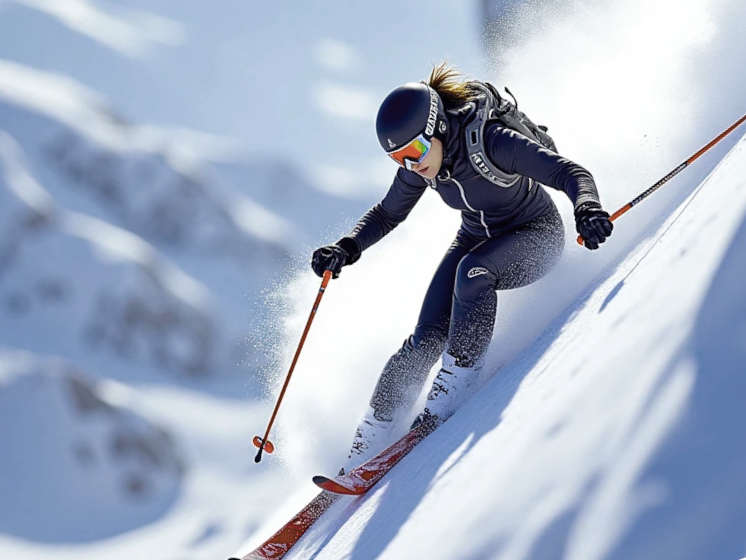Best Pre-Skiing Stretches for Downhill Skiers

Skiing demands strength, endurance, and flexibility. Pre-skiing stretches not only prepare your body for the slopes but also reduce your risk of injury. Whether you’re a beginner or an experienced skier, a proper stretching routine is essential. It boosts flexibility, reduces injury risk, and enhances performance. Dynamic stretches, like lunges and arm swings, prepare your body for the slopes, while static stretches help you recover post-skiing. Avoid stretching cold muscles and be cautious with injured or over-strained areas. By dedicating time to proper stretching, you’ll ski more confidently and comfortably, and be better ready for the thrill of the slopes.
First, Some Common Q & A’s
Is Flexibility Important for Skiing?
Yes, flexibility is crucial for skiing. It helps you move fluidly, absorb shocks, and maintain balance. Tight muscles can restrict movement, increasing the risk of strains, falls, and other injuries. Flexibility enhances your ability to handle unpredictable terrain and makes skiing more enjoyable.
Is It Good to Stretch Before Skiing?
Stretching before skiing is highly recommended. It warms up your muscles, improves circulation, and prepares your body for the intense physical activity of skiing. Dynamic stretches, which involve controlled movements, are particularly beneficial before hitting the slopes.
How Long Before Skiing Should I Stretch?
Aim to stretch 10–15 minutes before skiing. Pair your stretches with a brief warm-up, like jogging in place or doing jumping jacks, to elevate your heart rate and loosen your muscles.
Is It Better to Ice Before Stretching?
Icing is usually reserved for post-activity to reduce inflammation. Before stretching, focus on warming up your muscles. Cold muscles are more prone to injury, so prioritize gentle movements and dynamic stretches before skiing.
Some Good Stretching Practices for Skiers
- Warm-Up First: Begin with light cardio to increase blood flow.
- Hydration: Stay hydrated before and after stretching and activity (see below)
- Dynamic Over Static: Use dynamic stretches pre-skiing to activate muscles.
- Don’t Overdo It: Stretch until you feel mild tension, not pain.
- Breathe: Maintain steady breathing to maximize stretch effectiveness.
- Consistency: Regular stretching, even off the slopes, improves flexibility.
The Importance of Staying Hydrated Before and After Stretching
Hydration plays a vital role in maintaining muscle elasticity and overall performance. Before stretching, being well-hydrated ensures your muscles are supple and less prone to cramping or strain. Proper hydration supports circulation, delivering oxygen and nutrients to your muscles, which helps them function optimally during dynamic stretches.
After stretching, replenishing fluids is equally important. Stretching can increase blood flow, and maintaining hydration helps your body flush out waste products, such as lactic acid, reducing soreness and aiding recovery.
Tip: Drink water steadily throughout the day rather than consuming large amounts all at once. If skiing at high altitudes, hydrate even more to counteract the dehydrating effects of the cold and altitude.
Six Best Pre-Skiing Stretches
- Lunge with a Twist
- How to Do It: Step one foot forward into a lunge. Place your opposite hand on the ground and twist your torso, raising the other hand toward the sky. Hold for 10 seconds, then switch sides.
- Benefits: Opens hips, stretches quads, and engages the core.
- Standing Quad Stretch
- How to Do It: Stand on one leg. Bend the opposite leg, bringing your heel toward your glutes. Hold your ankle with your hand and maintain balance. Hold for 15 seconds per leg.
- Benefits: Loosens the quads and improves balance.
- Hamstring Stretch with Forward Fold
- How to Do It: Stand with feet hip-width apart. Hinge at your hips and reach for your toes. Keep a slight bend in your knees if needed. Hold for 15 seconds.
- Benefits: Stretches hamstrings and relieves lower back tension.
- Side Lunges
- How to Do It: Stand with feet wider than hip-width. Shift your weight to one side, bending that knee while keeping the other leg straight. Alternate sides for 10–15 reps.
- Benefits: Targets inner thighs and improves lateral flexibility.
- Cat-Cow Stretch
- How to Do It: Start on all fours. Arch your back (cat pose), then dip your belly and lift your head (cow pose). Repeat for 10 reps.
- Benefits: Warms up the spine and core muscles.
- Arm Swings
- How to Do It: Stand upright. Swing your arms forward and backward, gradually increasing range. Do this for 20–30 seconds.
- Benefits: Activates shoulders and improves upper body mobility.
But I’m Already on the Hill and Forgot to Stretch
Missed your stretching routine? No worries, you can do a simple stretching routine on the hill even if you have already geared up and put your ski boots on. This video shows a number of quick simple ways you can get in a stretch right on the hill or out front of the lodge.
Post-Ski Stretches: Cool Down the Right Way
Cool down stretches help reduce muscle soreness and improve recovery. After a long day skiing it can be the last thing you want to do but if you are like me and don’t get out to the slopes very often each season it can really make a difference for how sore you are the next day or two. Ten minutes of light cool down stretching can make all the difference.
- Seated Forward Fold: Sit with legs extended. Reach for your toes to stretch your hamstrings.
- Child’s Pose: Kneel and stretch your arms forward, lowering your torso to relax your back.
- Figure-Four Stretch: Lie on your back. Cross one ankle over the opposite knee and pull your leg toward your chest.
- Calf Stretch: Stand facing a wall. Place one foot forward, lean in, and stretch your calves.
Some Final Tips
When Should You Not Stretch?
- Acute Injuries: Avoid stretching acutely injured muscles.
- Cold Muscles: Stretch only after warming up.
- Excessive Pain: If stretching causes sharp pain, stop immediately.
Additional Tips for Stretching Success
- Stay Hydrated: Muscles perform better when you are hydrated.
- Wear Layers: Keep muscles warm during outdoor stretches.
- Stretch Consistently: Incorporate flexibility exercises into your daily routine for long-term benefits.

by: Blair Fontana
A versatile freelance content creator known for her engaging writing style and diverse range of interests. Blair has carved out a niche in lifestyle writing, captivating her audience with insightful articles… read more

